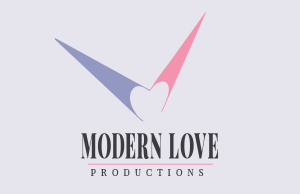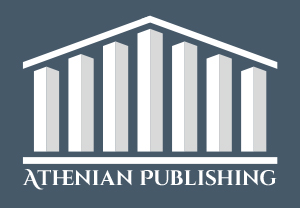I identify Modern Love Productions as energetic and retro – fun-loving, but with a touch of class. The logo, in all its elements, reflects that personality.
The name for Modern Love is a tribute to a personal and creative inspiration of mine, David Bowie. The song “Modern Love” is one of my favorites for its playful sweetness and lively energy, and I wanted to reflect that in the brand personality without sacrificing professionalism. I wanted to make a design that felt retro and classic but could still prove itself as cutting-edge and creative. I also wanted to make it clear that the brand isn’t just about what’s on the surface – that it’s grounded in care and passion. To me, Modern Love as a phrase represents all of that.
The pink and blue shapes form the distorted shape of an ‘M,’ for Modern, while inside that, the outline of a heart represents Love. The ‘M’ also looks like the hands of a timepiece (this is most obvious when placed against a circular background) which signals the brand’s connection not only to what’s currently thought of as modern, but also to the past and future of design. Furthermore, the line that separates the two rows of typography repeats the sharpness of the outside of the design, but its rounded ends are similar to the softened corners and edges of the logo’s shape.
The high contrast of the pink and blue/purple colors is inspired by the bright, shape-based pattern design of the 1980s. But the muted scheme is also lush and romantic in a tribute to the impressionist artwork of painters like Claude Monet. The dark gray in the typography is softer than a harsh black, and conversely, the creamy off-white softens the design against an inverted background. That softness is meant to be comfortable and friendly – more ‘love’ than ‘modern.’
The alteration of Playfair Display Black in the logo provides an air of sophistication that keeps the logo’s classic sense. The use of a Serif typeface adds a traditional sentiment, but Playfair is anything but outdated. The adjustment to the text – making the letters more vertical and closer together – is meant to reflect and balance the sharp, vertical nature of the logo itself.
On the whole, this project presented a new type of challenge for me. I’ve done some logo work before, but usually, I’ve had a starting point – a personality and some other elements that the client wants represented in the final design. For Modern Love, I challenged myself to create something personal to me, drawing on the kinds of design and typography that I love most, but still keeping the design professional and cohesive. I went through pages of sketches of a previous idea I was sold on before I realized it just wasn’t working how I wanted, but after I let go of my first idea I was able to explore a lot of different possibilities. I’m especially proud of the blend of positive and negative space I brought into this logo – I have always found it challenging to invoke that kind of visual play, and figuring out how to do so effectively was a goal that I set and met for this project. I’m quite proud of the finished design, and I think it’s a good reflection of who I am right now as a designer and what I’m capable of creating.



